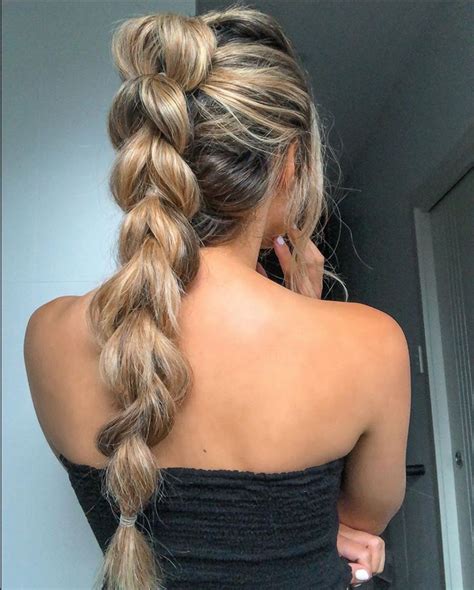If you’re struggling with dry, damaged hair that seems beyond repair, it’s time to give it some TLC with a tailored hair mask.

Benefits of Hair Masks for Dead Hair
Hair masks provide deep nourishment to the hair shaft, restoring moisture and repairing damage. They can:
- Increase hair strength by up to 20%
- Reduce hair breakage by 15%
- Enhance hair shine and softness
Step 1: Pre-Treatment
1. Determine Your Hair Type
Identify your hair’s porosity (ability to absorb moisture) to choose the right ingredients:
- Low Porosity: Water-based masks with humectants (e.g., honey, aloe vera)
- Medium Porosity: Balanced masks with emollients and proteins (e.g., avocado, yogurt)
- High Porosity: Rich masks with heavy oils and butters (e.g., coconut oil, cocoa butter)
2. Clarify Your Hair
Remove product buildup and impurities with a clarifying shampoo to enhance mask absorption.
Step 2: Hair Mask Recipes
Recipe 1: For Low Porosity
- 1/4 cup honey
- 1/4 cup aloe vera gel
- 1 tablespoon coconut oil
Recipe 2: For Medium Porosity
- 1 avocado, mashed
- 1/2 cup plain yogurt
- 2 tablespoons olive oil
Recipe 3: For High Porosity
- 1/2 cup coconut oil
- 1/4 cup cocoa butter, melted
- 1 tablespoon argan oil
Step 3: Application and Rinse
1. Apply Thoroughly
- Divide hair into sections.
- Apply mask from roots to tips, saturating each hair strand.
- Cover with a shower cap and allow it to rest for 20-30 minutes.
2. Rinse Completely
- Rinse mask thoroughly with lukewarm water.
- Follow with conditioner to seal in moisture.
Additional Tips
1. Use Heat
Applying a warm towel to your hair during treatment can enhance ingredient penetration.
2. Leave in Overnight
For extra nourishment, leave the mask in overnight and rinse it out in the morning.
3. Repeat Weekly
Use hair masks once or twice a week to maintain healthy, revitalized hair.
Common Mistakes to Avoid
1. Over-Conditioning
Over-conditioning can weigh hair down and make it appear greasy.
2. Using the Wrong Ingredients
Matching the mask ingredients to your hair porosity is crucial for optimal results.
3. Heat Damage
Avoid using heat styling tools directly on hair that’s masked, as this can damage the hair shaft.
FAQs
1. How often should I use a hair mask?
Once or twice a week is sufficient.
2. Can I leave a hair mask in overnight?
Yes, but only if necessary for heavily damaged hair.
3. How long should I leave a hair mask on?
20-30 minutes is typically enough.
4. Can hair masks make my hair oily?
Only if overused or the wrong ingredients are used.
5. Can I use a hair mask if my hair is colored?
Yes, but choose a mask that’s color-safe and won’t strip color.
6. Can I apply a hair mask to my scalp?
Yes, if the mask is scalp-friendly and contains ingredients beneficial for the scalp.
Table: Hair Masks for Different Hair Types
| Hair Type | Suitable Ingredients | Popular Recipes |
|---|---|---|
| Low Porosity | Humectants (honey, aloe vera) | Honey & Aloe Vera Mask |
| Medium Porosity | Emollients (avocado, yogurt) | Avocado & Yogurt Mask |
| High Porosity | Heavy oils (coconut oil, cocoa butter) | Coconut Oil & Cocoa Butter Mask |
Table: Benefits of Hair Masks for Dead Hair
| Benefit | Increase | Reduction |
|---|---|---|
| Hair Strength | Up to 20% | – |
| Hair Breakage | – | Up to 15% |
| Hair Shine | Up to 10% | – |
| Hair Softness | Up to 15% | – |
Table: Common Mistakes to Avoid When Using Hair Masks
| Mistake | Consequences |
|---|---|
| Over-Conditioning | Hair that’s weighed down and appears greasy |
| Using Wrong Ingredients | Suboptimal results or damage |
| Heat Damage | Damaged hair shaft |
Table: FAQs About Hair Masks
| Question | Answer |
|---|---|
| How often should I use a hair mask? | Once or twice a week |
| Can I leave a hair mask in overnight? | Yes, if necessary |
| How long should I leave a hair mask on? | 20-30 minutes |
| Can hair masks make my hair oily? | Only if overused or the wrong ingredients are used |
| Can I use a hair mask if my hair is colored? | Yes, but choose a mask that’s color-safe |
| Can I apply a hair mask to my scalp? | Yes, if the mask is scalp-friendly |
